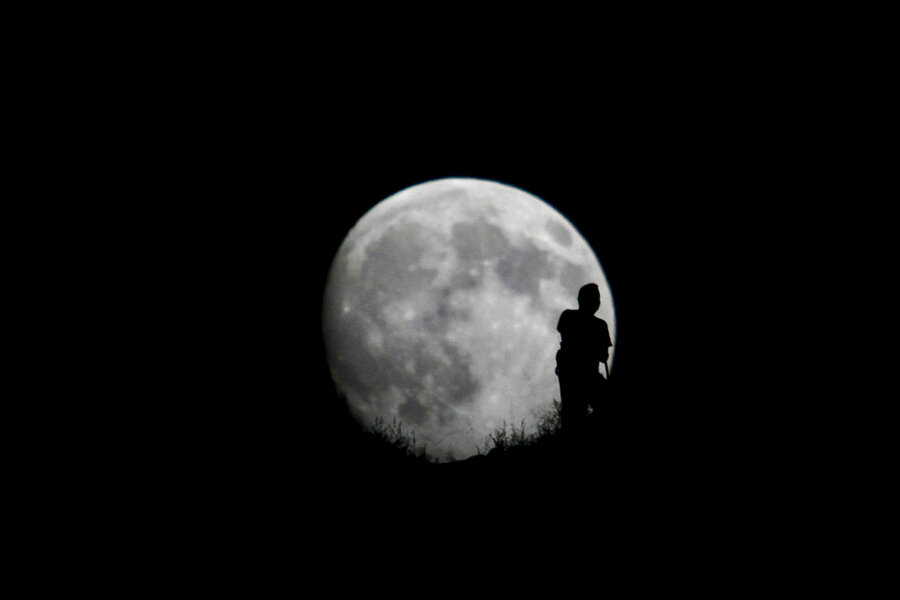Supermoon: When and where to see it
Loading...
Three space events are set to rock the skies this fall.
This weekend, sky gazers will be treated to a rare astronomical event: first, a “supermoon,” a full moon that coincides with the closest point of the moon’s orbit to the earth, called perigee. The result? A (very slightly) bigger and brighter moon.
Full moons vary in size because of the oval shape of the Moon's orbit. As the moon travels its elliptical path around Earth, it gets about 30,000 miles closer at perigee than at its farthest extreme, apogee. Full moons close to perigee seem extra big and bright.
"In practice, it's not always easy to tell the difference between a supermoon and an ordinary full moon," NASA says. "A 30 percent difference in brightness can easily be masked by clouds and haze. Also, there are no rulers floating in the sky to measure lunar diameters. Hanging high overhead with no reference points to provide a sense of scale, one full Moon looks about the same size as any other."
When will be the best time to see tonight's supermoon?
After moonrise, when the moon is just above the horizon, the moon "will look bigger and brighter than when it is higher up in the sky," explains Timeanddate.com, "because observers are able to compare the apparent size of the Supermoon with elements in the landscape – hills, foliage and buildings.” This effect is popularly called the moon illusion.
Why are giant moons illusory? "For reasons not fully understood by astronomers or psychologists, low-hanging moons look unnaturally large when they beam through trees, buildings and other foreground objects. When the moon illusion amplifies a perigee moon, the swollen orb rising in the east at sunset can seem super indeed," according to NASA.
In other words, it isn't actually any bigger than it is when it's high in the sky, but a big moon next to a tree just feels bigger than the same moon alone in a black sky. To prove to yourself that the moon doesn't change size, hold out your arm while looking at the moon. No matter where the moon – or supermoon – is in the sky, you'll be able to cover it with your outstretched thumb.
Supermoons can have a real effect on Earth, including larger-than-usual tides, according to EarthSky: "The Moon’s gravity can cause small ebbs and flows in the continents called land tides or solid Earth tides. These are greatest during the full and new Moons because the Sun and Moon are aligned on the same or opposite sides of the Earth."
If you miss Saturday night's event, you have another two chances in September and October. However, the next Supermoon, on Sunday, September 27, 2015, is a special one – it will be totally eclipsed for over 3 hours, making it the fourth in the "Blood Moon" tetrad.
If you are a sky gazer, circle September 27 on your calendar now.







